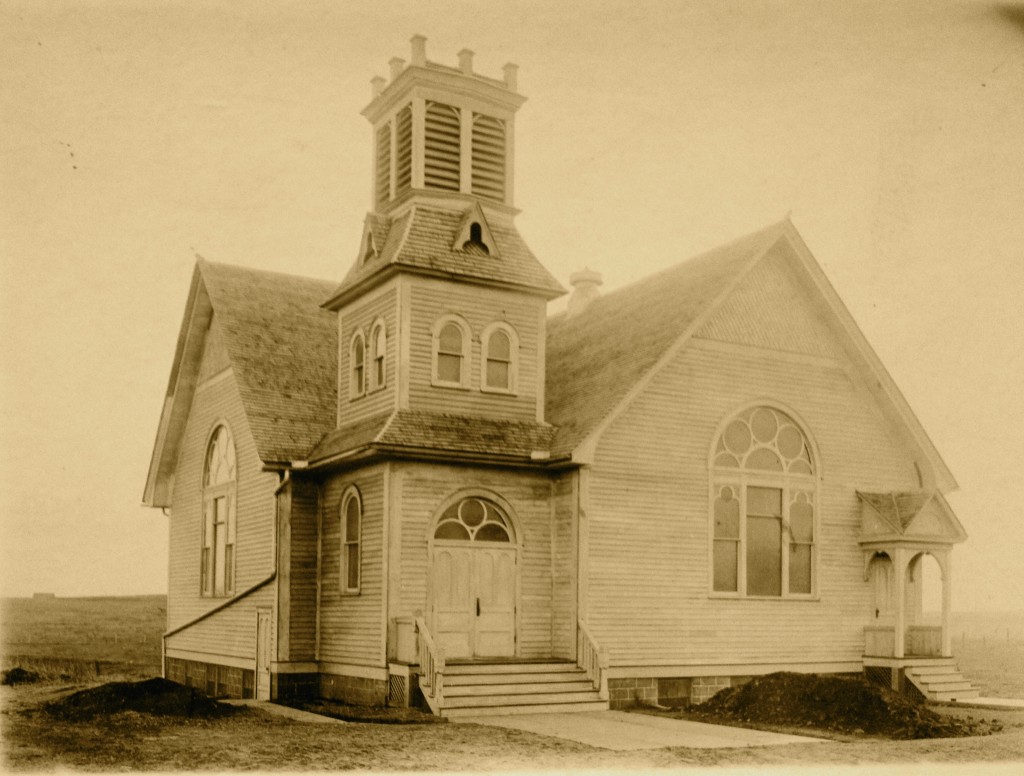Clergy have one of those fuzzy, slippery jobs – a job where nothing and everything is in the job description. Also, because being a pastor is essentially relational, there’s an emotional subtext to almost everything we do: from presiding at a funeral, to the look on our face while shaking someone’s hand or giving them communion, to what we put in the newsletter and what we neglected to print in the newsletter, to coffee hour conversations, to what we’re wearing, to how we run a meeting, to vacuuming the hall before a wedding. You worry about people. You carry a lot of heavy stories and griefs. You mediate and manage difficult issues in people’s lives and in your church. And you wonder whether you’ve done the right things or reacted in the right ways. You hear stories about the pastor who drove someone away because of a careless or crabby mistake. You hear about churches that are dying or close because of misguided, overly-ambitious, or cowardly leadership.
But God is at work in the lives of churches and of people. It’s not just clergy who make it all happen. A good sermon is great, a fine liturgy can be transcendent, a church where all the programs run smoothly and as advertised is a wonder to behold! But the Holy Spirit finds people. Clergy shouldn’t carry their congregations entirely on their backs, like images of Catherine of Siena with the Church Boat on her shoulder.
Don’t get me wrong, clergy have an enormous influence on their congregation. But people (at least in healthy congregations) are resilient, forgiving, and distracted. Or at least, more than most clergy are.
I’ve learned to let things go and to say to myself: “You’re not as important as you think you are.” (This is a great relief.) And, “You think about congregation and its people seven days a week, but most of them think of you one day, if that.” And, like those grandmothers of long ago who would leave an imperfection in their quilt patterns so as not to compete with God, I say to myself: “Heidi, you have to let yourself fail at something today.”

Quilt detail, Dotty Raun
My friend Ellen came up with “12 Steps for Clergy Recovery,” once, in about fifteen minutes during our clergy bible study. I wrote them down and think about them often. Then I mentioned them in a column I wrote recently for The Christian Century and a couple folks have asked for them. I’m sure there are other vocations where they could be useful, too – human services of any kind, parenthood, etc.
The 12 Steps for Clergy Recovery
The Rev. Ellen Ekevag
Step 1 – We admitted we were powerless over our church – and that our lives had become unmanageable.
Step 2 – We came to believe that only God, a Power greater than ourselves, could restore our congregation and us to sanity.
Step 3 – We made a decision to turn our church, our will, and our lives over to the care of God.
Step 4 – We made a searching and fearless inventory of our stewardship of time and talent.
Step 5 – We admitted to God, to ourselves, and to our vestry/board that we can’t do it alone.
Step 6 – We were entirely ready to have God help us realize a healthier and more fulfilling way to live out our vocation.
Step 7 – We humbly asked God to remove our need for control.
Step 8 – We made a list of all persons we had harmed or forgotten because of our vocational life.
Step 9 – We made direct amends to such people wherever possible, except when to do so would injure them or others.
Step 10 – We continued to take personal inventory and when we over-functioned, promptly admitted it.
Step 11 – We sought through prayer and meditation to improve our conscious contact with God as we understood God, praying only for knowledge of God’s will for us and the church, and the power to carry that out.
Step 12 – Having had a spiritual and vocational awakening as the result of these steps, we tried to carry this message to other clergy, and to practice these principles in all our affairs.
This is not meant to be a panacea, but I thought I’d put it out there on the interwebs for anyone who might find it helpful. Tweak, edit, and share as you like. The original 12 Steps can be found here, and in many places.

A “church” I found in the trash, ages ago.





Much love to you, Heidi. Thanks.
As a rector and a friend of Bill W’s, I will simply say thank you, thank you, thank you and HUZZAH!
Twelve Steps – always good stuff. Thanks Heidi!
This is fabulous! Thank you so much! Is there such a thing as a clergyperson who is NOT a control freak? God must think we’re hilarious with all our plans and machinations.
This is great, but Step 4, I would emend as follows: “We made a searching and fearless inventory of our stewardship of time, talent and treasure.” We clergy must model generosity for our parishioners, for when we do, others get it that we are invested along with them. For some, knowing we give too helps them give more generously. We shouldn’t be off the hook for giving, just because we’re clergy. Our example of financial generosity, based on gratitude for all God’s gifts and presence in our lives, speaks louder than any stewardship sermon that we could give. But, I’d still give the sermon, too. 😉